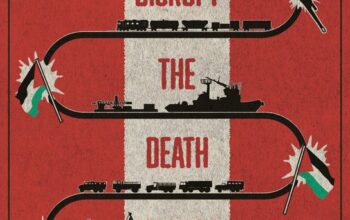“Peace is the prerequisite for the survival of humanity in the 21st century. In a perfectly peaceful world, there would be no costs from violence and no need for prevention through military spending.”
That is what the Institute for Economics and Peace, IEP, stated in its reports on the economic value of peace. As we unfortunately know, we are not living in a perfectly peaceful world and the costs of the war, both direct and indirect ones, are too many and they include military spending. Of course many of the resources provided for military spending could be redistributed to more productive parts of the economy and higher return activities such as education, business stimulation, health and public infrastructure that ensure long-term growth and prosperity.
Assuming that, when it comes to peace and war there are different factors we should take into consideration. If we want to analyse the costs of peace and war we should first think about what kind of costs we are referring to. If we talk about war, should we talk about costs in terms of human lives loss? In terms of whole countries to rebuild? In terms of weapons trade? Or the ones for humanitarian aids and displaced people? And when it comes to peace, what are the costs we should consider? The costs of the effort to build peace among society? The costs of the necessary resources to maintain it?
One thing we know for sure is both peace and war have an impact on the economic system and, always according to the IEP report “When peacefulness improves, money saved from containing violence can be redirected to more productive activities, yielding higher returns and increasing GDP. Substantial economic improvements are linked to improvements in peace”. The IEP defined the global economic impact of violence as the expenditure and economic effect related to containing, preventing and dealing with the consequences of violence. The costs of war, both direct and indirect ones have an enormous impact on the society, they undermine the stability and the economic development of a country and they’re devastating and long-lasting.
As we can see in the report, examples of direct costs include medical costs for victims of violent crime, capital destruction from violence and costs associated with security and judicial systems. Indirect costs include lost wages or productivity due to physical and emotional trauma. There is also a measure of the impact of fear on the economy, as people who are frightened they may become victims of violent crime alter their behaviour. Both a war and the expectation of an imminent conflict are dangerous because people don’t feel safe and stable, work-related decisions are affected by that and investments and consumption stall of fall down. According to IEP the instability related to a war also lead to a high rate of criminality.
Moreover, it’s known that if people feel unsafe and insecure, the wellbeing of the society is compromised and mental problems like anger, anxiety, frustration and depression start to emerge among people. Of course, this will also affect the productivity of a country, although, this kind of costs are more difficult to identify and quantify. Linked to that, the insecurity that refugees and internally displaced people (IDPs) face extends far beyond the guns and blasts of the war, it includes lack of access to food, health care, housing, employment, and clean water and sanitation, as well as loss of community and homes.
As highlighted in the IEP report, MENA region (Middle East and North Africa) has the highest economic impact from Armed Conflict at 21.8 per cent of the global total, or $113.3 billion. This study includes two types of costs: direct and indirect. The Middle East and North Africa remains the world’s least peaceful region as measured by the 2020 GPI. Of the ten least peaceful countries in the world, five are located in this region. Only Qatar, Kuwait, and the United Arab Emirates (UAE) are ranked in the top 50 most peaceful countries.
It is also demonstrated that when conflicts happen in authoritarian regimes, they have a higher economic impact, authoritarian regimes lost on average 11% of GDP to the costs of violence while in democracies the cost was just 4% of GDP. The report also shows that since 2007, authoritarian regimes recorded the largest increase in their economic impact of violence, increasing by 27 per cent, while full democracies recorded the largest reduction at 15.9 per cent.
All those facts and considerations should lead us to reflect about the economic and social consequences of wars and, most of all, make us think about where we would be if we’ve spent all those resources on more constructive actions. If it is true that all of us are aware that we live in a world where many conflicts occur, can we, on the opposite side, imagine a world without war? And is it a reachable goal? Does it only mean the absence of war? The diagram below could give us some starting points.
The IEP in its report presents the transformational concept of Positive Peace that is defined as the attitudes, institutions and structures that create and sustain peaceful societies. The mere absence of war, that is called negative peace by the IEP, is not enough to build a peaceful society, because it is necessary not only to reduce the direct costs of violence, but to reallocate them. Countries would benefit from investments in more sustainable and beneficial fields and they would create the conditions for the society to flourish, both economically and in the human potential sphere. The underneath diagram shows, in the form of a cycle, the relation between peace and economic growth, because as outlined in the report, violence and the economy can be considered a system, where improvements in one can lead to improvements in the other and vice-versa.
Giudi Aligi
References:
Watson Institute for International and Public Affairs, The Costs of war (2021). Link
Institute of Economics and Peace, Economic value of peace (2021). Link
Douglas Broom, The cost of world peace? It’s much less than the price of war (2021). Link
Steve Killelea, Peace in the Age of Chaos (2020)



